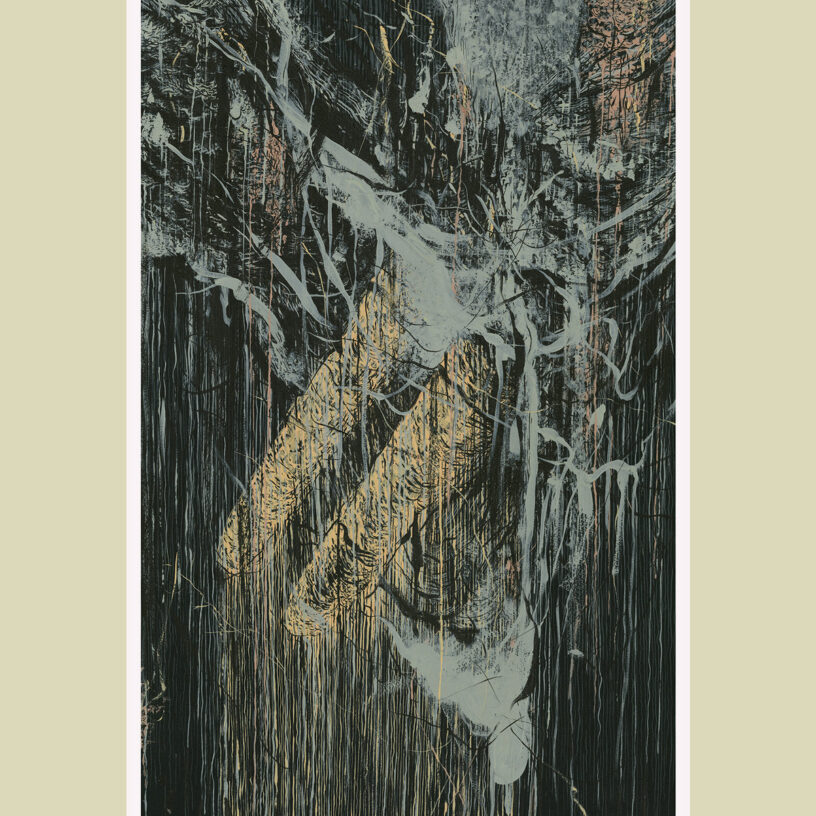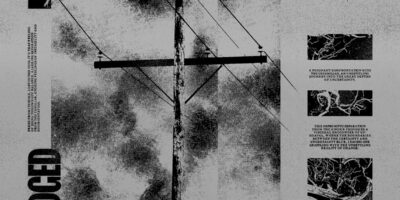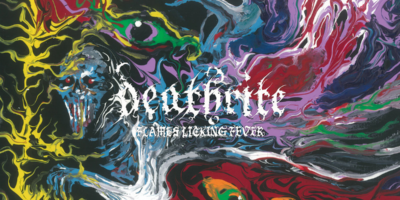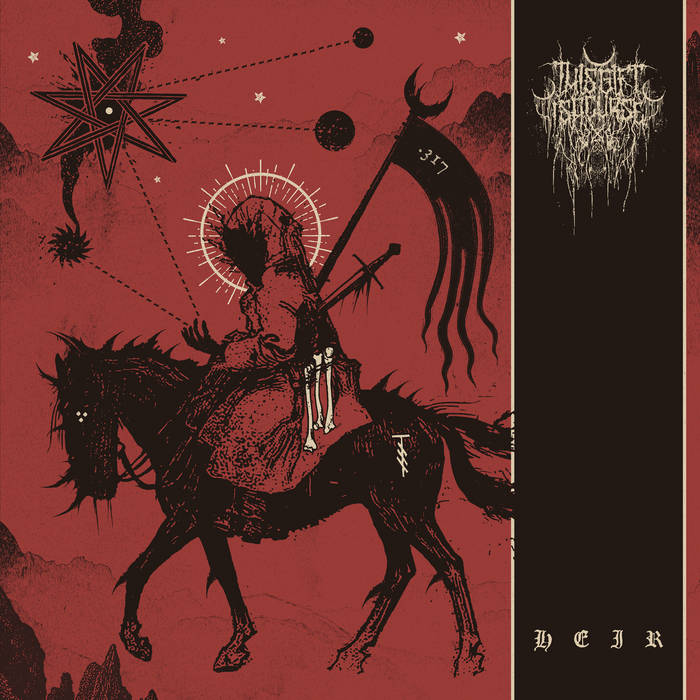Band: Sumac
Album: May You Be Held
Genre: Post-Metal
Country: USA / Canada
Release Date: 2nd of October, 2020
Released via Thrill Jockey
Cover Artwork: © Thrill Jockey, 2020
Sumac‘s sound isn’t easy to define. While I’d generally describe their music as Post-Metal, they don’t sound anything like the genre’s stalwarts Neurosis or Cult of Luna . Luckily though, thanks to their Supergroup-like line-up, their name doesn’t need any introduction for the uninitiated: comprised of Aaron Turner (ISIS, Old Man Gloom), Nick Yacyshyn (Baptists) and Brian Cook (Russian Circles), Sumac formed in 2014 and have been rather prolific ever since, releasing three studio albums as well as two collaborations with Japanese noise-icon Keiji Haino. May You Be Held is their fourth studio effort and was just released via Thrill Jockey.
All this name-dropping should give you at least somewhat of an idea what you are dealing with here if you aren’t familiar with the band. Sure, as I said, Post-Metal might be the most obvious genre-tag, especially given the background of some of these musicians, but in the end, Sumac sound nothing like the members’ other bands and May You Be Held doesn’t sound like anything Sumac have done before. The cover itself draws heavy similarities to its predecessor Love In Shadow and they stay true to themselves by packing only 5 tracks onto a one-hour-long album, but to my ears, they sound more inaccessible than ever before. Which, to be quite honest, is a good thing?!
It’s hard to examine this album based on tracks, as I really think it should be heard in full in order to understand it – something which I assume the band wants as well, as they didn’t even release a promotional track for the album, but simply an “excerpt” from its title track, the album’s core piece so to speak. The track starts like a rather typical sludge song with the album’s most (or only?) memorable riff, but after a few minutes, Sumac‘s experimental side kicks in – a side they have shown on all their releases, but have indubitably deepened in their recent collaborations with Keiji Haino, the results of which can still be heard on this record. As a side note: Those two albums were some of the most out-there experimental “Metal” releases I’ve heard maybe ever, and you can hear how much those mostly improvised recording sessions have influenced the band. Just when you thought you got into the first track, it turns into an improvisational piece playing with the borders of what can still be considered Metal.
Besides the two core tracks on the album, the aforementioned 20-minute title track and the 17-minute “Consumed”, the other three tracks can be described as the Intro, Interlude and Outro of the album. Can be, but shouldn’t: it would clearly undermine their effectivity. While they are way less riff-heavy than the main songs, mostly consisting of drone-like instrumentals, they create frightening soundscapes and can serve as welcome downtime from the exceedingly experimental Noise-Metal of the two core tracks. The as-always amazing production by Matt Bayles (who produced all of ISIS‘ albums) and mix by Kurt Ballou (guitarist of Converge and producer of assumingly 90% of heavy music these days) also leave nothing to desire: the way the vocals interact with the music on this record is truly something else and makes even the quietest sections on this album feel heavy and harrowing.
Now, describing the album as being made of two core tracks and three less heavy sort of interludes makes it sound rather short and unspectacular. Which is wrong – after all, it’s still over an hour long. But most importantly, every track should be seen as part of a whole, and the album is much grander than the sum of its parts. Every song, every note, seems to be carefully placed within the frame of this album as a whole. Even sections without a single note at all seem to add to the hour-long experience this record provides. An experience which is most easily described as challenging, but ultimately rewarding.
Some people will definitely be put off by the idea of listening to a 5-track, hour-long experimental album. However, this hour feels short overall, which brings me to my only complaint about this album. It’s not too long, neither is it too short – it just feels too short. There’s so much to discover on this record, and with so few songs on here, of which even fewer (or none) follow very traditional song structures, it tends to flow by without completely gripping you if you don’t let it. Experimental albums often need your full attention and this is no exception. Again, this isn’t necessarily new terrain for a band like Sumac – but here more than on their previous releases, I can only fully enjoy the record if I take my time and listen to it with all my attention, which – let’s be honest – we all love doing but on most days don’t nearly have enough time for.
If you do take that time though, it’s definitely a rewarding listen. Just prepare to make that plural – almost every spin made me want to dive back into it again immediately. I’ve listened to this album plenty of times by now and am still not sure whether it has fully revealed itself to me or if I have even begun understanding it. What I can say though is that I like it. A lot.
8 / 10
Favorite Tracks:
As I Said – just listen to the whole damn thing!






Leave a Reply